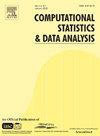A Markov model for estimating the cost-effectiveness of immunotherapy for newly diagnosed multiple myeloma patients
IF 1.6
3区 数学
Q3 COMPUTER SCIENCE, INTERDISCIPLINARY APPLICATIONS
引用次数: 0
Abstract
Multiple myeloma (MM) is a malignancy of plasma cells, originating from B lymphocytes and accumulating within the bone marrow. The prevalence of MM has increased in industrialized countries, representing 1-1.8% of all cancers and 15% of hematologic malignancies. Immunotherapy has broadened therapeutic options for MM, offering treatments with generally improved efficacy and reduced toxicity compared to conventional therapies. Daratumumab, a monoclonal antibody recently granted regulatory approval, exemplifies this advancement, demonstrating improved patient outcomes. However, the substantial cost of daratumumab has significantly increased per-patient treatment expenditures. Consequently, the economic burden associated with this new class of therapies warrants careful evaluation of their cost-effectiveness. To address this, a six-state non-stationary Markov model was developed for cost-effectiveness analysis of immunotherapy in newly diagnosed MM patients and, more broadly, in the oncohematological patient population. This model aims to provide healthcare professionals and policymakers with actionable insights into cost-effective interventions, supporting informed decisions regarding optimal treatment strategies.
估计新诊断多发性骨髓瘤患者免疫治疗成本-效果的马尔可夫模型
多发性骨髓瘤(MM)是一种浆细胞恶性肿瘤,起源于B淋巴细胞并在骨髓内积累。MM的患病率在工业化国家有所增加,占所有癌症的1-1.8%和血液恶性肿瘤的15%。免疫疗法扩大了MM的治疗选择,与传统疗法相比,提供的治疗通常具有更高的疗效和更低的毒性。最近获得监管机构批准的单克隆抗体Daratumumab就是这一进步的例证,证明了患者预后的改善。然而,daratumumab的巨大成本显著增加了每位患者的治疗支出。因此,与这类新疗法相关的经济负担需要仔细评估其成本效益。为了解决这个问题,开发了一个六状态非平稳马尔可夫模型,用于分析新诊断的MM患者和更广泛的血液肿瘤患者群体的免疫治疗的成本效益。该模型旨在为医疗保健专业人员和政策制定者提供具有成本效益的干预措施的可行见解,支持有关最佳治疗策略的知情决策。
本文章由计算机程序翻译,如有差异,请以英文原文为准。
求助全文
约1分钟内获得全文
求助全文
来源期刊

Computational Statistics & Data Analysis
数学-计算机:跨学科应用
CiteScore
3.70
自引率
5.60%
发文量
167
审稿时长
60 days
期刊介绍:
Computational Statistics and Data Analysis (CSDA), an Official Publication of the network Computational and Methodological Statistics (CMStatistics) and of the International Association for Statistical Computing (IASC), is an international journal dedicated to the dissemination of methodological research and applications in the areas of computational statistics and data analysis. The journal consists of four refereed sections which are divided into the following subject areas:
I) Computational Statistics - Manuscripts dealing with: 1) the explicit impact of computers on statistical methodology (e.g., Bayesian computing, bioinformatics,computer graphics, computer intensive inferential methods, data exploration, data mining, expert systems, heuristics, knowledge based systems, machine learning, neural networks, numerical and optimization methods, parallel computing, statistical databases, statistical systems), and 2) the development, evaluation and validation of statistical software and algorithms. Software and algorithms can be submitted with manuscripts and will be stored together with the online article.
II) Statistical Methodology for Data Analysis - Manuscripts dealing with novel and original data analytical strategies and methodologies applied in biostatistics (design and analytic methods for clinical trials, epidemiological studies, statistical genetics, or genetic/environmental interactions), chemometrics, classification, data exploration, density estimation, design of experiments, environmetrics, education, image analysis, marketing, model free data exploration, pattern recognition, psychometrics, statistical physics, image processing, robust procedures.
[...]
III) Special Applications - [...]
IV) Annals of Statistical Data Science [...]
 求助内容:
求助内容: 应助结果提醒方式:
应助结果提醒方式:


